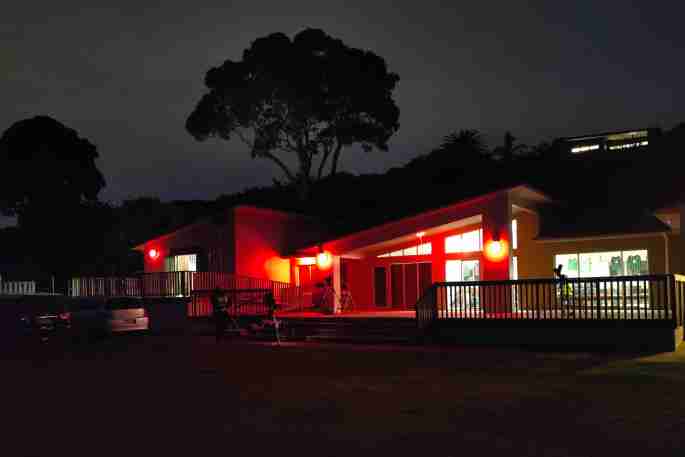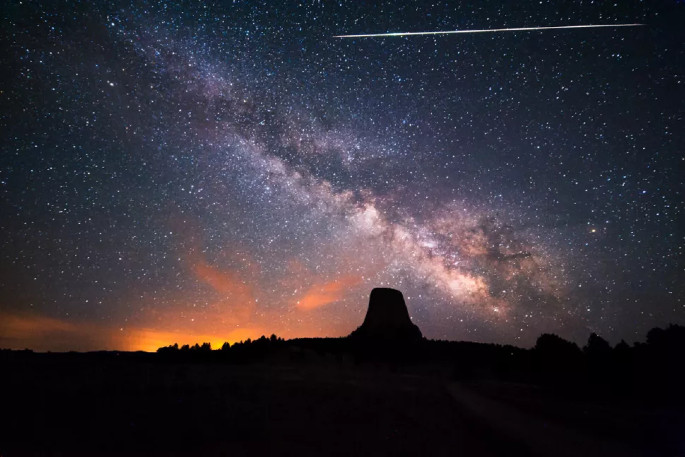It'll be all eyes skyward on Tuesday night with a rare meteor shower expected across our night sky.
Meteor showers are not uncommon, but Tuesday night's event promises to be unique.
New Zealand is the best place in the world to see this celestial show, Otago University geologist, Professor James Scott told Afternoons.
On December 12 between 8pm and 12.30am "New Zealand is in the prime place to see the first meteor shower associated with comet 46P".
“This particular comet passed pretty close to Jupiter in 1972, so some time ago, and that knocked a load of debris off it," says James.
"And this is the first time this debris intercepts Earth's orbit, and it's going to be this December, and it's going to be visible for that four to five hour period.”
It’s a special event, he says.
“Every year Earth’s orbit intercepts meteor showers. So certainly, we get plenty of meteor showers that are visible and anyone who's looked up in the night sky and seen a few shooting stars is probably seeing the remnants of a comet or an asteroid that the Earth’s orbit is intersecting.
“But finding new ones is pretty uncommon. Many of them have been documented for 1000s of years, certainly Halley's comet, which is the first comet to be detected was recorded in Babylonian records.”
This is the first shower associated with near Earth object, Wirtanen, he says and luckily it's going to occur during the evening in New Zealand.
Coinciding with Wirtanen’s meteor shower is another called the gemenids, he says.
“The geminids are active at the same time, but the trajectories of the meteor showers come from different orientations.
“And so, the geminids are going to be going in one direction. And at the same time, the debris from the comet Wirtanen is going to be going in another direction. “
As long as there’s clear skies above us, there’s a good chance of seeing shooting starts, he says.
“Even if it's not those associated with Wirtanen, it’ll be the geminids, which are pretty spectacular, they can be hundreds per night.”
And they’re distinct from satellites, he says.
“You should see something flash across the sky, these things are traveling at kilometres per second, when they're high in the atmosphere, they're often between about 10kms per second and about 80kms per second, which are the fast end - so they're quite distinct from satellites.”
Shooting stars are, often, tiny pieces of debris entering the atmosphere, he says.
“Shooting stars for the most part are really small bits of debris, perhaps pea-sized even. And as they enter the Earth's atmosphere, they compress the air in front of them, which is a gas and it gas heats up and that melts the rock that's coming in, and that vaporizes components, and that gives rise to the flaming tail.
“But of course, because they're only small bits of rock, they often completely melt up.”
Fireballs, he says, are larger and come in lower.
“About 20 kilometres above Earth, which seems quite high, but it's actually really, really quite shallow. And this is big debris, it can be kilograms of material.”
They are slow enough that the air around them isn't hot enough to melt and then they fall through a process called dark flight, he says
“They're still there, but they're just now falling towards the surface of the earth after that fireball stage.”
There are about 100 cameras throughout the country pointed at the sky as part of Fireballs Aotearoa, a citizen-initiated New Zealand meteor camera network.
"Each night they record the meteors that cross the sky and often there's tens to hundreds of them in an evening.
"And they can precisely triangulate the different meteors and so we'll be able to record the duration, the length when they occurred, the volumes of them and it's down to this citizens science network."
"Predicting meteor showers is not an exact science," says James. "The thing is as long as it's clear skies above us and you lie on your back and look at the sky, I'm sure you'll see shooting stars."
Fireballs Aotearoa hopes to track meteorites when they land here, James says.
Scientists also hope to learn from meteor showers like this.
Comet Wirtanen will not get close to Earth but other meteorites have in the past, such as the one believed to have caused the extinction of the dinosaurs.
"Documenting the showers and trajectories of these rocks is an important scientific endeavour, really, because it feeds into more information about what might happen or whether a particular comet is of concern."
To view Tuesday's show it is best to get away from bright city lights if possible.
"The darker the sky, the better the view."
 Otūmoetai Sports & Recreation Club building. Photo: Fiona Hunt.
Otūmoetai Sports & Recreation Club building. Photo: Fiona Hunt.
Tauranga Astronomical Society
On Tuesday night, December 12, the Tauranga Astronomical Society will be running their Christmas Market from 5pm to 9pm at the Otūmoetai Sports & Recreation Club hall at Fergusson Park which also houses the Tauranga Observatory.
The society says by 9pm the sky will be getting dark enough for viewing Jupiter and Saturn through their telescopes so they will likely remain open for a while if enough people want to look through the telescopes.
It is $5 entry for adults to the observatory, whereas children and Tauranga Astronomical Society members are free.
"The meteor shower, if it happens, will be visible from anywhere with a clear, dark sky," says a society spokesperson.
"Using a telescope would not be suitable for viewing meteors. Best to get comfortable on a sun lounger etc and enjoy watching the sky."



0 comments
Leave a Comment
You must be logged in to make a comment.